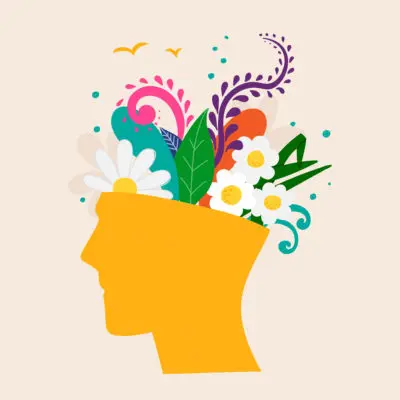Medical Editor: Dr. Lynn Marie Morski, MD, Esq
Curious about how to take ketamine and what it feels like?
There’s been increasing awareness of ketamine since the U.S. Food and Drug Administration (FDA) approved Spravato as a treatment for major depressive disorder. Ketamine has been used off-label for treating related mental health conditions for years with impressive results.
Ketamine and other psychedelic substances like LSD, MDMA, and psilocybin, are being explored as evidence grows surrounding their transformative effects. While these substances have some traits in common, ketamine is lesser-known, and its effects differ from these other well-known psychedelics.
Here are the basics of ketamine intake, its effects, and a few things everyone should know.
What is ketamine?
Originally an anesthetic used for pain during surgical operations, ketamine has demonstrated the potential to change how practitioners address treatment-resistant depression and other conditions for which conventional medicines have failed to offer adequate relief of symptoms.
Ketamine shows impressive potential for relief of mental health issues, like suicidality and treatment-resistant depression. Research continues to explore further possibilities.
Additionally, people use ketamine to assist them on their paths of personal exploration—setting intentions to connect with a higher purpose—often to make sense of their sources of suffering.
Ketamine is also commonly used as a recreational drug but is legal only with a prescription.
How does ketamine work?
In cases where ketamine is used to bolster existing treatment strategies that haven’t shown sufficient results, it offers a different approach to addressing mental health issues. While many psychiatric medications focus on regulating neurotransmitters such as norepinephrine, dopamine, and serotonin, ketamine works with the neurotransmitter glutamate.
Ketamine also increases a protein called brain-derived neurotrophic factor. This protein enhances neural plasticity and helps create new thought and behavioral patterns when individuals feel “stuck.” When ketamine is used in conjunction with psychotherapy clients more quickly identify and challenge disillusioned beliefs. From here, they are able to develop new ways of thinking which lead to rapid symptom resolution.
Only recently has research demonstrated a link between levels of glutamate in the brain and mood regulation. It is also possible that ketamine helps reduce inflammation related to cognition, but there is still more to learn before that can be verified.
Intake methods and effects
Ketamine has several different methods of intake. How ketamine is taken depends on the purpose—and dosage can vary accordingly. The characteristic effects are similar to the different methods of intake, but each has the potential to yield a unique experience, based on the individual, and other variables.
How does ketamine feel?
In general, ketamine can make a person feel dissociated from themselves or reality. This is sometimes considered a benefit, as it might provide the opportunity for more productive therapy sessions while processing difficult traumatic experiences (like in cases of post-traumatic stress disorder (PTSD).
Other possible effects can include a feeling of transcendence that allows a person to reflect more objectively on their lives, connect more deeply with themselves, or experience a sense of greater meaning. Ketamine might also intensify, enhance, or alter the appearance of colors, shapes, and sounds in one’s surroundings.
Ketamine can enhance a person’s feelings of dissociation. Dissociation can be unnerving for some people, particularly in cases of high dosage or a response that results in uncomfortable experiences involving hallucinations, anxiety, and psychosis. Dizziness can also occur, or the sensation of being stuck in one place.
For ketamine ingested orally (the clinical term for ketamine lozenges is a troche), users often report feeling numbness or tingling in their mouth and tongue. They also may report slight feelings of dizziness at the initial onset.
To minimize the likelihood of a negative response to ketamine, it should be taken under the guidance of a knowledgeable practitioner who can guide and supervise a ketamine experience.
For a comprehensive description of physical and psychological side effects, read our Beginner’s Guide to Ketamine.
How to Consume Ketamine:
Here are the known intake methods and what can usually be expected in terms of effect.
Drip or intravenous infusion
It is common for ketamine to be administered at a clinic by way of infusion treatments, also called an IV (intravenous) drip. In this method, the medicine bypasses the digestive system and directly enters the bloodstream.
For infusion treatments, a person typically receives ketamine in a limited series of sessions, with a period of supervision after each completed session which ensures patient safety. Even though the acute effects may fade within an hour or two, it can take the rest of the day (sometimes longer) to safely drive a car or operate machinery.
Ketamine infusions occur as one part of a comprehensive therapy plan, which involves psychotherapy and (frequently) other psychiatric medications that may be needed.
Injections or intramuscular shots
An intramuscular injection of ketamine is a shot administered to the muscle tissue. The onset of effects can happen more quickly, and the treatment itself takes much less time than an infusion treatment (which can take about 40 minutes or longer). This might help increase the accessibility of ketamine to people for whom infusion treatments are not an option.
Nasal inhaler
Ketamine is available in a nasal spray or inhaler in both generic versions and in a version called Spravato. Spravato has been FDA-approved for the treatment of major depression when typical antidepressants have not been effective, and for acute treatment during the period of time it takes to see effects after first starting a medication.
With Spravato, a person administers the medicine themselves under the supervision of a practitioner and stays in their care for a period of supervision. Operation of a vehicle or machinery, as well as other functions requiring uncompromised awareness of safety, should be avoided until the next day.
Oral intake
Ketamine is also available in the form of an oral lozenge called a troche, which takes the longest for the onset of effects. The lozenges are dissolved in the mouth and absorbed in the mucosa membranes of the mouth and tongue. The lozenge either remains under the tongue or when it is dissolved, a person “swishes” the dissolved lozenge in their mouth as it mixes with saliva. Then they swallow the solution after a period of time as directed by the prescriber (5-15 minutes).
It can also be taken as an extended-release tablet, which research has found may help people avoid or minimize long periods of dissociation.
These lozenges can be prescribed by a primary care physician, psychiatrist, or someone licensed to prescribe such as a psychiatric nurse practitioner. Taking ketamine orally may be less bioavailable than other methods, but can be a more affordable option. Depending on the severity of the patient’s symptoms, sometimes prescribers suggest lozenges in addition to an IV infusion, or injection treatments.
Other Intake methods
Ketamine comes in 2 forms: powder and colorless liquid. The other known methods of intake are by snorting the powder or ingesting the liquid orally (as is or mixed into a beverage), however, there is no documented use of these techniques in official trials related to therapy and are associated with personal or recreational use.
Where can I get ketamine?
Ketamine must be obtained and provided by a practitioner who has a license for use in therapeutic practice. Producing it at home or obtaining it other than from a practitioner is illegal.
Also, without the guidance of an experienced guide, a person who opts to use ketamine without direction from a licensed practitioner risks dangerous health complications, dependency, and possible addiction.
Ketamine is intended to be combined with other therapeutic modalities to achieve optimal success and long-term best outcomes.
Safety and precautions
Ketamine has been determined to be safe as a part of treatment for those with non-psychotic psychiatric needs for healthy adults. It should not be used by anyone with a history of or potential to develop psychosis. It is not intended for recreational or unsupervised use, can be dangerous if misused, and is not legal for those purposes.
If ketamine seems like the right fit for addressing your mental health and personal therapeutic needs, it is important to locate a licensed and competent practitioner who can create an appropriate treatment plan for you.
How to Take Ketamine Faqs:
Are Ketamine Troches Addictive?
Ketamine troches, like other forms of ketamine, have the potential for addiction and abuse. While they are prescribed for specific medical purposes under supervision, misuse or overuse can lead to addiction. Always follow your healthcare provider’s instructions and use ketamine only as prescribed.
Can You Take Ketamine Troche on an Empty Stomach?
It’s generally recommended to take ketamine troches on an empty stomach. This can help with absorption and reduce the likelihood of nausea, which is a common side effect. However, follow your healthcare provider’s specific instructions regarding dosing and food restrictions.
How Is Ketamine Ingested?
Ketamine can be ingested in various ways. It is commonly administered intravenously (IV) in medical settings. Ketamine can also be taken orally in the form of pills, capsules, or troches (lozenges). Additionally, some people misuse ketamine by snorting or inhaling it, which is not safe and can lead to serious health risks.
How to Take Sublingual Ketamine?
To take sublingual ketamine, place the ketamine troche under your tongue and allow it to dissolve completely. This method allows for quicker absorption through the mucous membranes under the tongue, leading to a faster onset of effects compared to oral ingestion.
What Is the Best Way of Taking Ketamine?
The best way to take ketamine depends on your specific medical condition and the guidance of a healthcare professional. Ketamine should only be used as prescribed by a healthcare provider. The appropriate method of administration (intravenous, oral, or sublingual) will be determined based on your individual needs and the purpose of the treatment. Misusing ketamine for recreational purposes is not safe and can have serious health consequences.
For comprehensive information about ketamine and its uses, benefits, side effects, and risks, read our Beginner’s Guide to Ketamine.
Read More About Ketamine:









